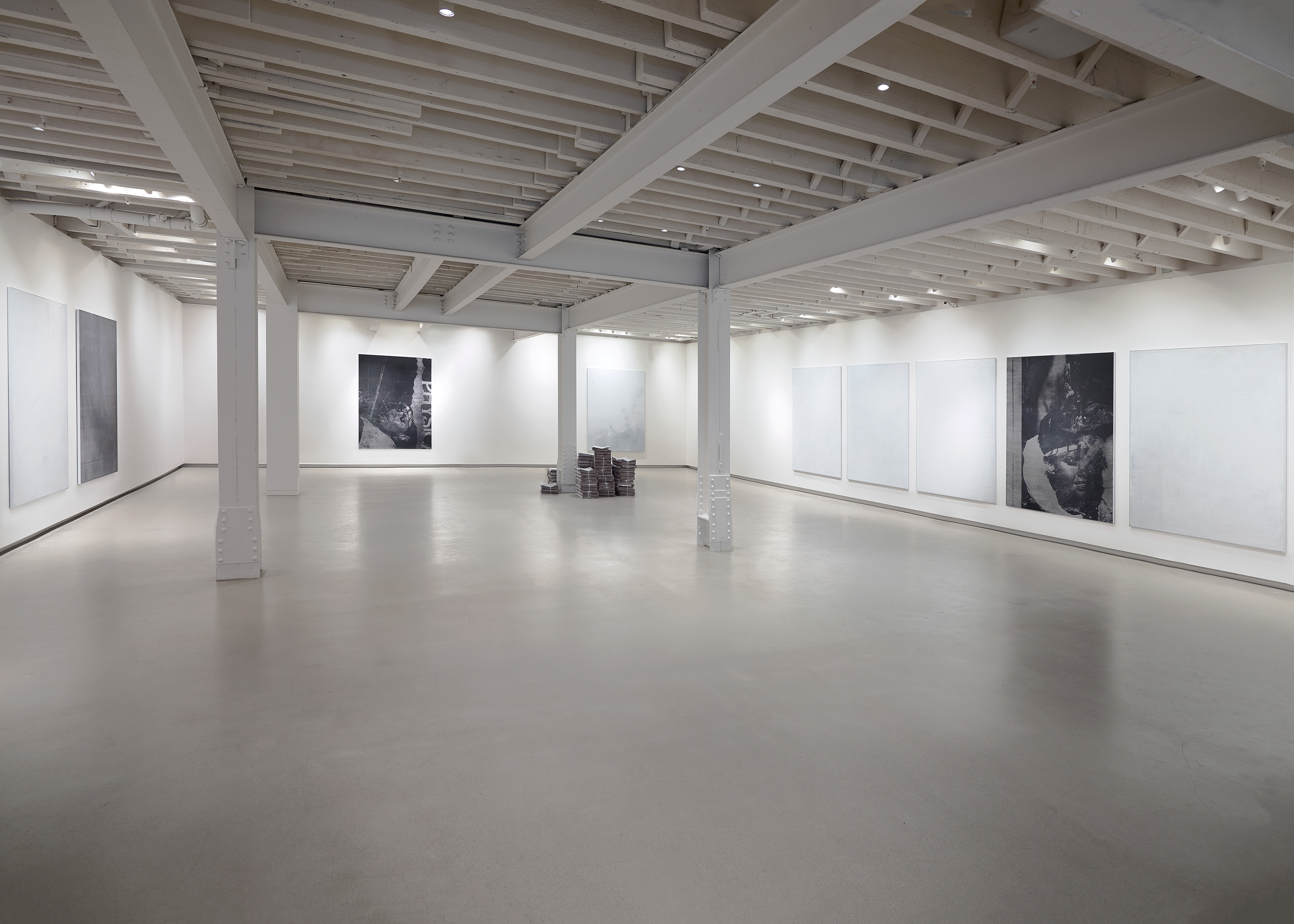


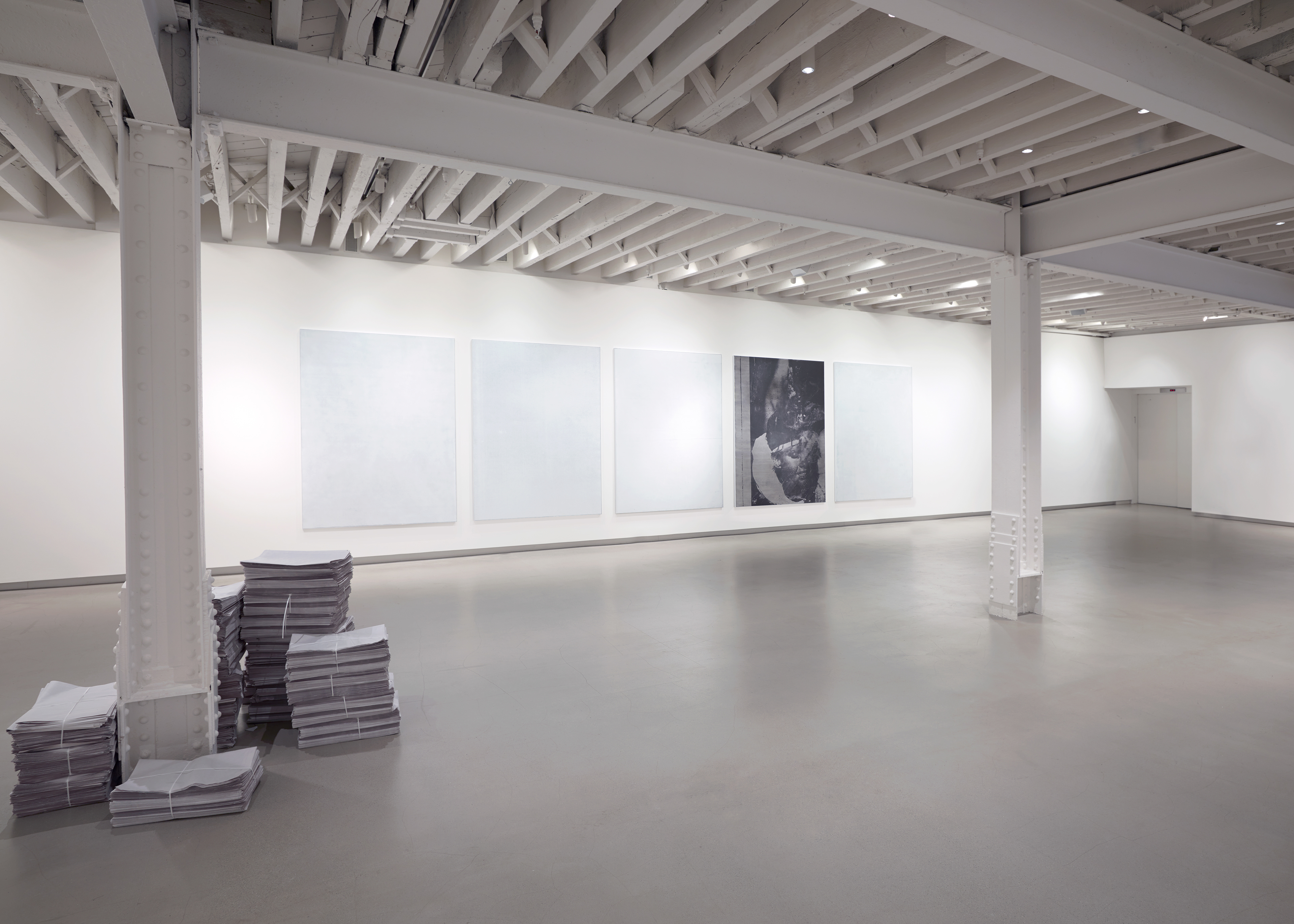
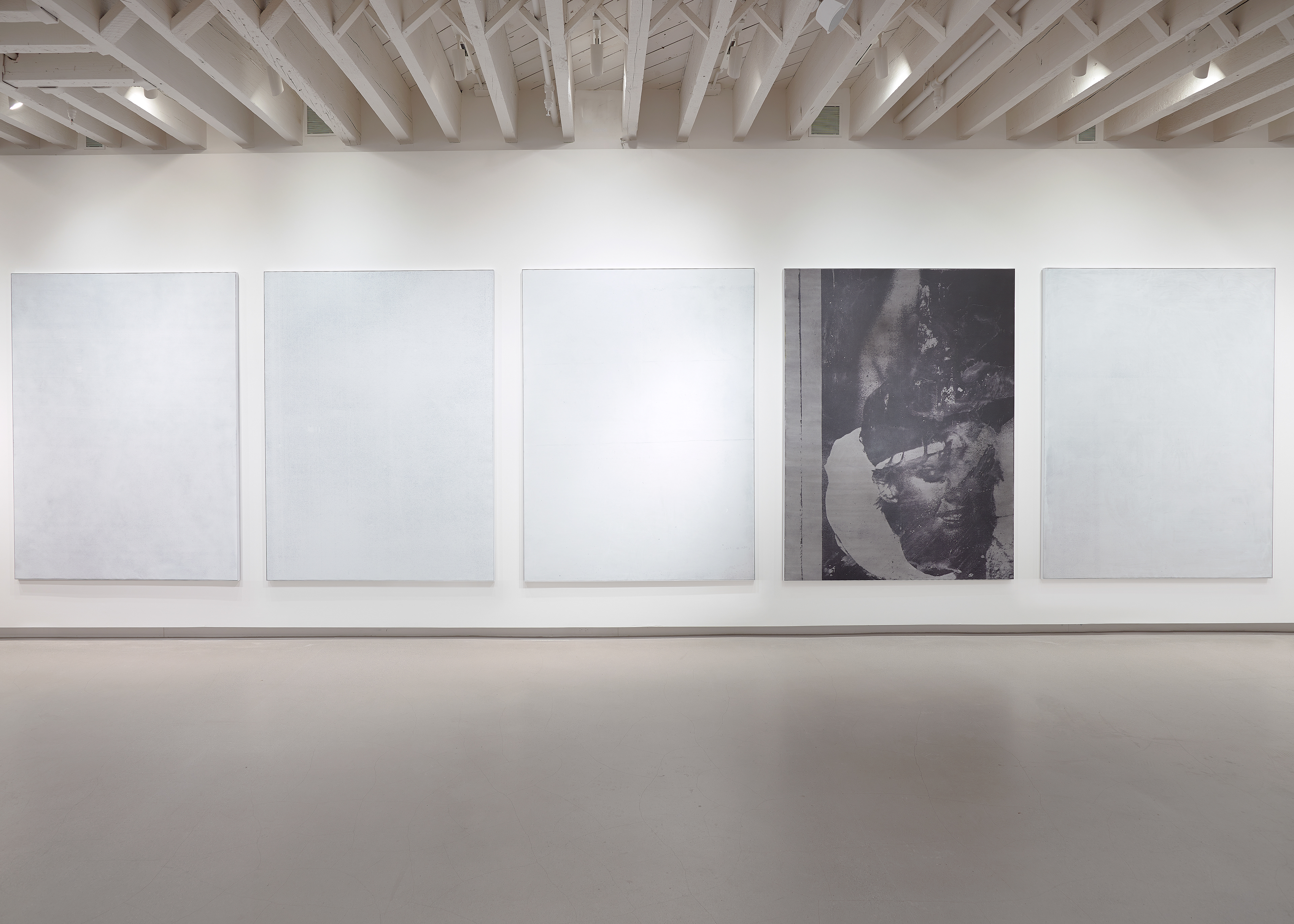


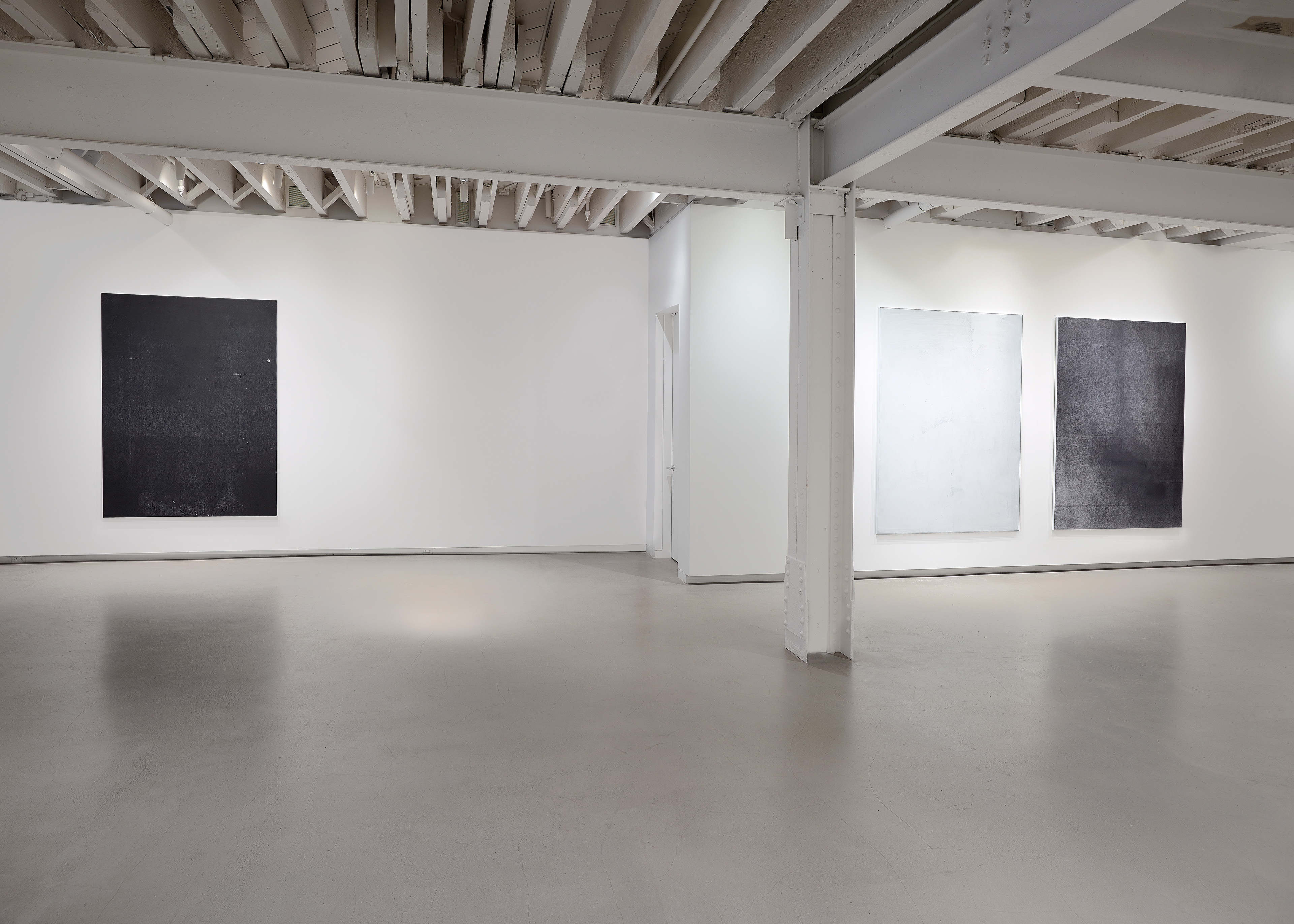
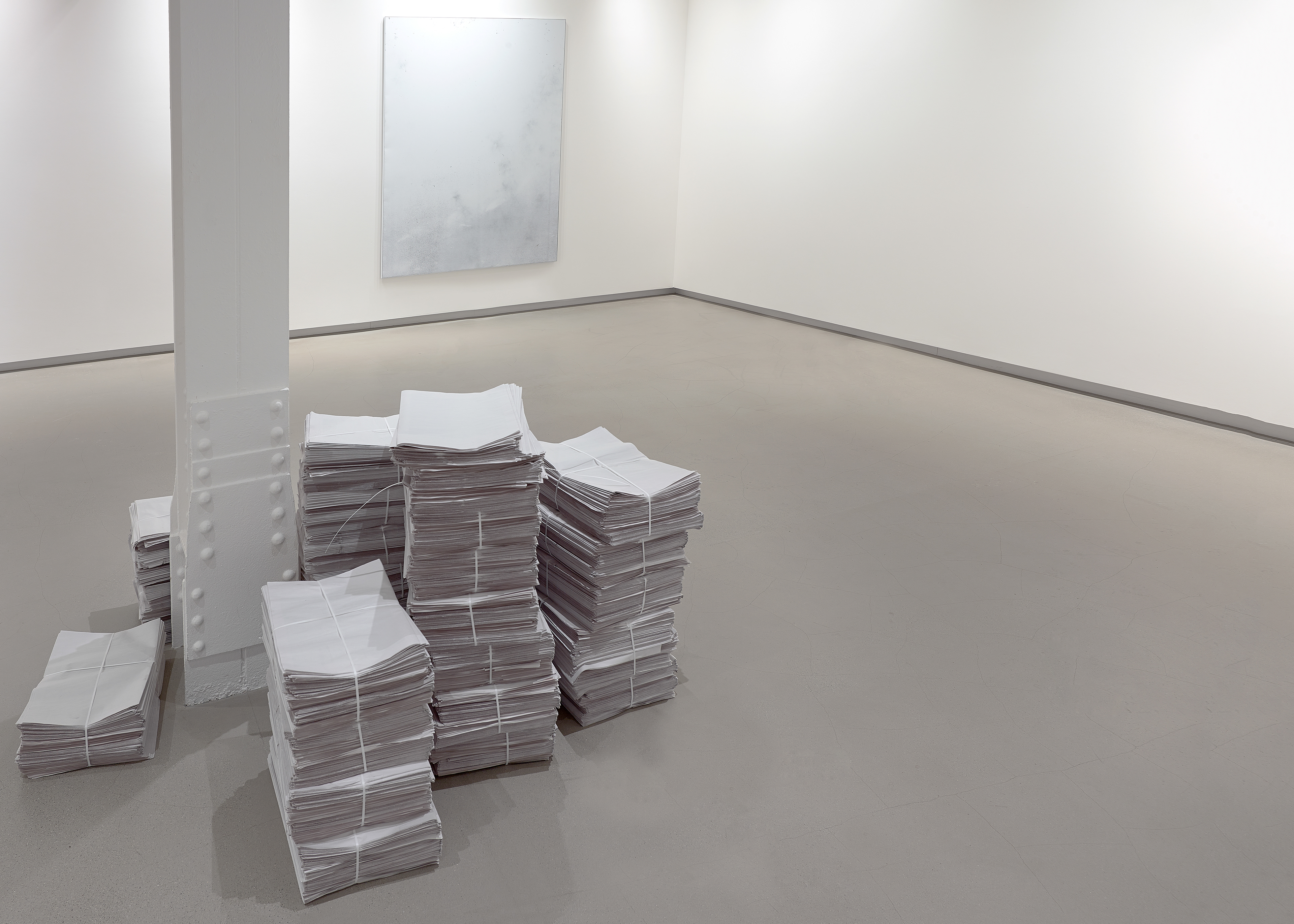
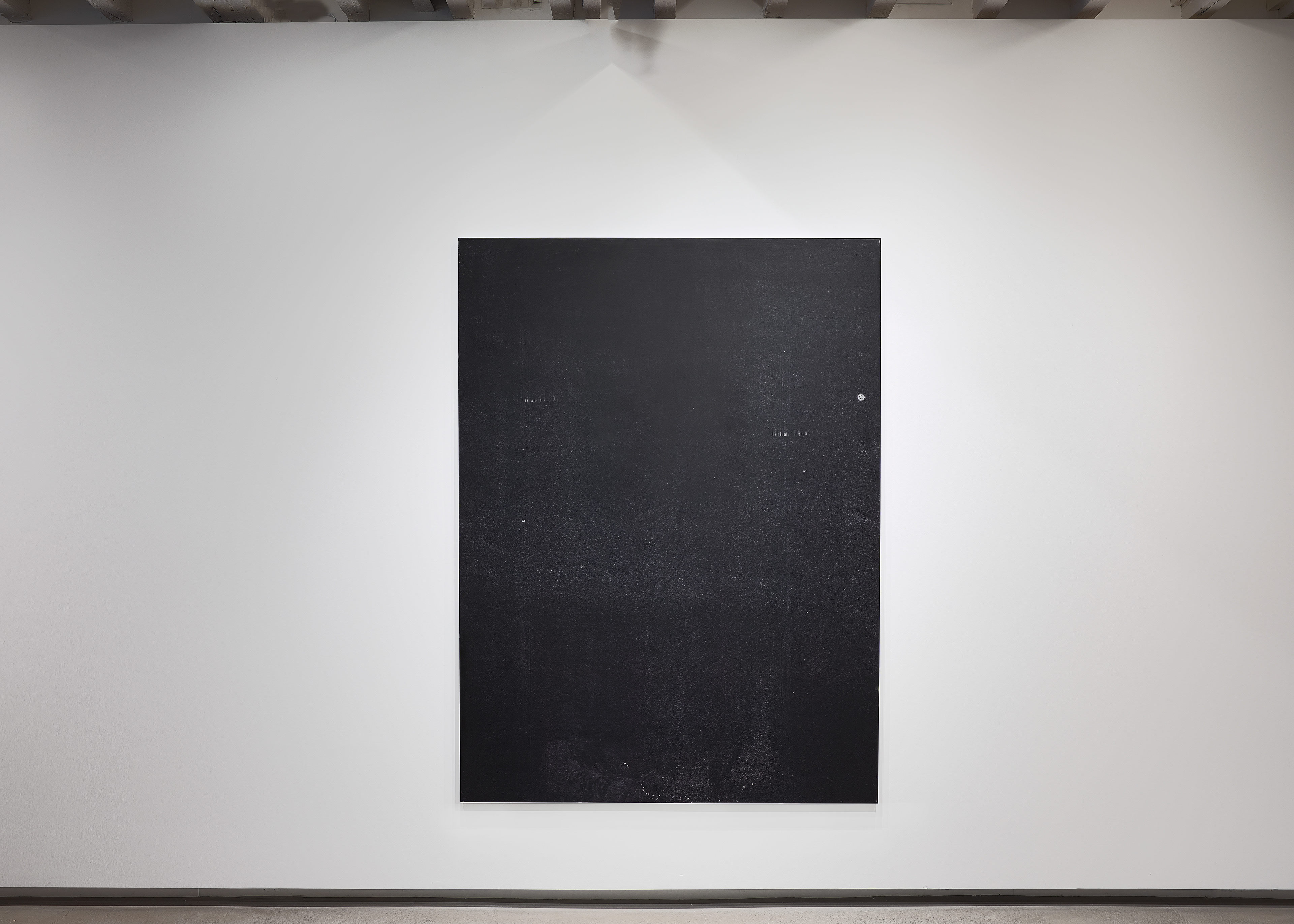
'Glances Closer To Blindness' soloshow
RH gallery New York 2015
In his recent work Manor Grunewald has made a dual turn, pushing his paintings in two seemingly opposing, but in fact intimately related directions. Towards a washed out, nearly empty field, on the one hand, and towards a full, image-laden one on the other. However, in a sense, we could say that Grunewald’s paintings have always demonstrated tendencies towards both an effulgence of imagery and that same imagery’s erasure. For example, for a long time he has made collages out of various publications that he collects: everything from comic books to rock climbing magazines. In the work immediately preceding that included in this exhibition, the Concrete and Organic Mess paintings, Grunewald had reduced the presence of imagery in his work to the point of near, but never complete invisibility. In the former series, the head of a character from the 90s video game Street Fighter might peak out from an otherwise almost total wash of thin layers of grayish silver paint. While in the latter, Grunewald achieved something approaching a black monochrome by layering screenprint upon screenprint of close up images of geological formations.
So, in a way, one could say that the image is something that has persisted as a concern throughout Grunewald’s work, making itself more or less evident at different points in time. In this latest body of work, then, Grunewald explores, in a more direct way made possible by the background of these years of formal investigation, both the conditions of the image’s presence and of its erasure, which is in turn shown to also have been the same as the state of possibility for its emergence in the first place.
This entire body of fourteen works is based on two images—the back and front of Olivia Newton-John’s 1981 megahit “Physical.” This subject matter is very apropos, considering the physical, even performative labor that, as in his other series, Grunewald employs to produce these paintings. Each image has been photocopied numerous times by Grunewald and, laying around the studio, takes on the routine marks of its daily use there. Two of these have been silkscreened onto canvas, serving as the show’s anchors, whose outsized fragments of Newton-John’s face allow us to make sense of the “abstractions” that surround them. For, in these other paintings, it is as if that kind of outsized display of familiar content has vanished, either through overload or erasure.
At one pole are those works where Grunewald has blown up parts of the image to the point of near obscurity. As with the earlier Organic Mess paintings, here content is pushed to the point where it tips into the realm of abstraction, the original referent obscured. At the other extreme we are presented with practically “nothing,” though in the most elegant way, just a few stray registers of the silkscreen’s dot matrix are allowed onto the canvas. It turns out that in these works Grunewald has degraded the same kinds of images that, elsewhere in the series, burst boldly forth. He took those images and rescanned them, putting them through a photocopier set to progressively lighter settings. Grunewald then paints over the resulting barely-there image with semi transparent layers of mixtures of thinner with oil and spray paint, etc.
The juxtaposition of such washed out works alongside very full ones suggests Wade Guyton’s recent presentation at Petzel gallery in New York. However, where Guyton’s sparse canvases were in fact the result of them having been used in the studio as sheets along which printed works were dragged, leaving marks in the process, Grunewald’s pairing suggests the plenitude and absence of imagery, going beyond just displaying the processes that make up a painter’s studio practice. For by eroding the image to the point of near erasure, he also reveals the very substrate of the digital image, one that today is so often invisible, smoothed over except in the event of a glitch that throws the ordered rows of pixelated data into disarray. Yet, here Grunewald has less fixated on a glitch in the image economy, than uncovered and revealed to us the very material substrate that subtends all digital images. For if only the canvas was filled by a more concentrated, and very particular symphony of silkscreen marks then it might read as the Olivia Newton-John “Physical” source image, each of those dots of paint has the potential to be one of that image’s composite atoms. However, in this anemic state they struggle to make any meaning at all, this being the point, and as such they cannot properly be understood except in the context given by the company of the other canvases in the series.
Yet, the very full, almost monochrome works are similarly about a certain erosion of the image’s content. Such that, when pushed over a line, it becomes impossible to read the meaning implied. In a certain sense one might say that these are the two primary significatory possibilities for images these days in a networked, digital economy—to go viral, or fail to register at all. Related to this, we might also follow Hito Steyerl, writing about the “poor” image, and imagine the connotations of this “failed” registration more in material terms, as with an image that has been accelerated through the network, and in the process has deteriorated by having been uploaded, downloaded, blogged, and reblogged too many times. This reading also aligns with the original source image that has, in these paintings, degraded beyond recognition: the cover of Olivia Newton-John’s 1981 megahit “Physical.” Where at the time Newton-John’s song was released a dedicated fan might wear out the cassette or vinyl record it is on, today the fan finds that their love of sharing the sound and image files of their celebrity idol also can end up going through a similar, if now digitized state of deterioration.
The fact that Grunewald is here concerned with the nature of images, even more so perhaps than painting, which serves as the vehicle, support, or frame for this content, is underscored by his use of synthetic canvas designed for printing. If he had used more conventional linen or cotton canvas, as he has in the past, then the various reductions and overflows he enacts would reside solely in the realm of painting. This is one of the significatory strands in the work, it is true. However, as much or even more so this work is about the ways in which such visual content is delivered to us. As such, the lack of texture in the canvas, means that—as much as it references painting—so too does it resemble a number of other kinds of content delivery systems, from paper, to photography, to board. This is of course the nature of a canvas destined for printing. For this means that it essentially must function as the substrate of a photographic image, rather than a painterly one. In this way, when Grunewald does print and stretch this material, painting and other referents like photography are suggested and productively placed in tension with one another.
The image is now ostensibly at the forefront of Grunewald’s work, but the abstract nature of the systems of meaning by which it circulates is still his central concern, as it also has been in the past several series of paintings. He has simply moved to address the two limits of this field of possibilities—erasure and overload, showing them in the process to be two sides of the same epistemological coin.
- Alex Bacon, New York, 2015